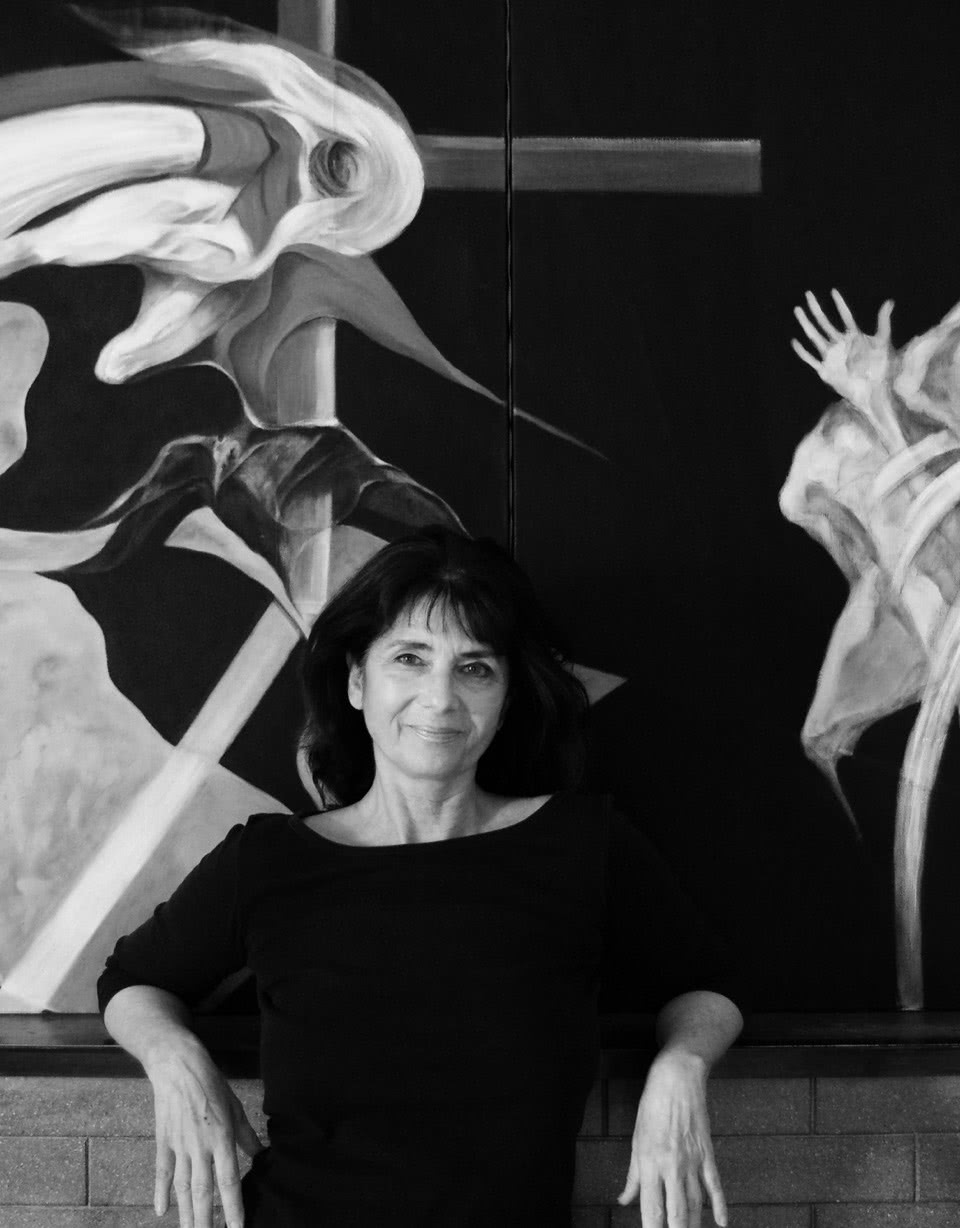
Born in Athens in 1957, Amelia is a Swiss artist of Anglo-Hellenic origin. Since childhood she was passionate about the arts. Aged eleven she left for England to attend the Arts Educational School ( today Tring Park School for the Performing Arts) where apart from dance and drama her curricular courses included drawing, painting, sculpture and pottery and was awarded the 1972 Arts Cup.
Life events brought her to Switzerland in 1976 where she has lived and worked ever since.
In 1979 she graduated from Académie-de-Meuron in Neuchâtel,and pursued her studies at the Université de Lausanne, taking courses in History of Art, the Art of the Far East, plus Museology and Art & Mass Media with Réné Berger at the Musée Cantonal des Beaux-Arts de Lausanne. Her Interest in the art and culture of China and Japan led her to travel extensively in the Far East. She studied Mandarin at the Institute of Oriental Studies in Geneva and followed a course of Chinese Calligraphy at the School of Fine Arts in Lausanne.
Theatre and dance influenced her work, and helped define her artistic language.
She works mostly with oils, using an almost choreographic and anatomical approach to the human body.
Her work has been exhibited in galleries and contemporary art spaces in Switzerland, France and Greece, and can be found in private and corporate collections.
2022 SWISSARTEXPO – ARTBOX.Projects 4. Zurich, Switzerland
2015 TECHNOHOROS Art Gallery – “Contemporary Dystopia”, Athens, Greece
2003 MONTREUX ART FORUM – Montreux Music & Convention Centre, Switzerland
1999 AIM – “In Vino Veritas”, Espace Gambetta, Bordeaux, France
1998 BENETATOU Art & Culture Center – Athens, Greece
1998 AIM ( Artists in Motion collective) – Rue Centrale, Lausanne, Switzerland
1980’s Salon des Jeunes Artistes, Gallerie d’Arfi , Denges, Switzerland
Artist’s Statement
I have drawn, painted and danced ever since I can remember.
My work is all about emotions, the emotional imprints life events leave on our psyche. Over the years and through various approaches I came to realise that attempting to depict raw emotion, rather than its cause, is more thought provoking and universal, and leaves the viewer freedom of interpretation.
I seek to convey the awe of our existence, in all its beauty, cruelty and absurdity, The canvas is a stage upon which emotions are transformed into entities each telling its own story.
I usually improvise, however a specific event, image, sketch or even music may be the trigger.I am never sure of the outcome of each painting as they tend to take on a life of their own. Each painting is a journey, an adventure, a dialogue and often a battlefield.
Journey to the depths of the human soul
by Bia Papadopoulou, Art Historian
Plunging into the depths of the human soul, the work of Amelia Papageorgiou functions as grief-striken cries. It introduces the spectator to a troubled and daunting world, where he is guided through visual illustrations of fear, anguish and pain.
The figures, which are brutally distorted and mutilated, call to mind human carcasses, gaping wounds, and hideous human like remains of mauled flesh or ghostly beings. The entrails are presented to the onlooker for scrutiny like personal anatomy charts.
The disjointed figures contort and swirl vigorously while partially draped in bandages, bloodstained gauze or squalid shroud-like cloth. These are the strange protagonists of an uncanny choreography whose theme appears to be the mortal voyage towards death.
Often, the story spreads across two or three canvasses which function as a single entity. The drama unfolds in an undefined, two-dimensional and obscure place. The black background is punctuated by diverse monochromatic areas, lines and curves, which work as interconnecting links of the narrative. The rennaissance laws of perspective are purposefully ignored since Amelia creates abstract geometric settings in which to host these timeless creatures.
Inspired by Chinese Calligraphy, figures are likened to ideograms which are empowered by the artist’s psychological and emotional energy as they are created. Calligraphy brush strokes evolve into familiar shapes and forms evoking the fragmented existence of modern man. The simultaneous depiction of both the internal and external parts of these wounded creatures is none other than an allusion of the tortuous journey to the depths of the human soul. A journey leading to self awareness and redemption.
The paintings become palpable fields on which fragments of the psyche assemble and fuse with present-day existential fears for the future. The unerving and lurid images that emerge are familiar to each and everyone of us. They echo scenes from the theatre of the absurd, in which we live, and testify to man’s hatred for his fellowmen. They terrify us, paralyse and petrify us, yet they also arouse and bring to the surface our craving for peace and tranquillity.